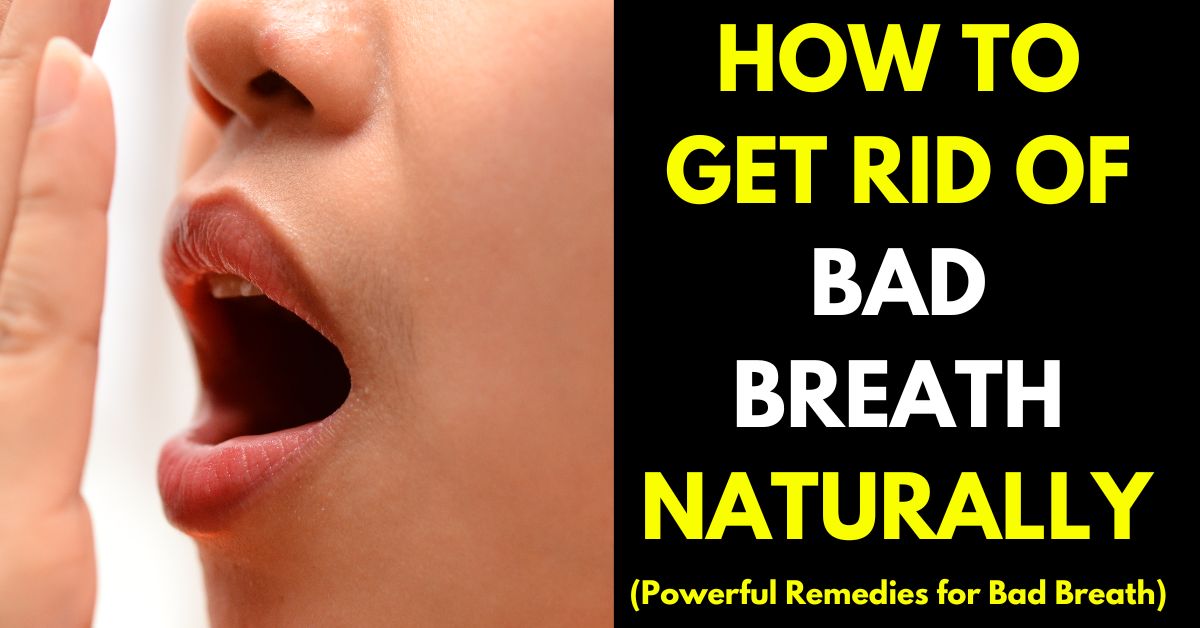
Swollen feet, also commonly known as edema, is a condition that can be caused by various factors, such as prolonged standing or sitting, ineffective blood flow, or underlying medical conditions. This condition is characterized by abnormal fluid accumulation in the tissues, leading to discomfort and limited mobility.
While seeking professional medical advice is crucial for severe cases, simple home remedies can help manage and reduce swelling effectively. In this article, we will explore what edema is, the various causes of swelling in the legs and feet, and discuss six effective home remedies for leg swelling or edema to reduce swelling naturally.
Understanding Edema: Key Insights for Better Treatment Solutions
Edema occurs when an abnormal fluid buildup in the body’s tissues leads to swelling in specific areas, such as the legs and feet. This condition, known as peripheral edema, can result from various underlying factors, such as excessive salt intake, standing or sitting for extended periods, hormonal changes, and certain medications. Gaining a comprehensive understanding of the causes and symptoms of edema is crucial in devising effective treatment solutions.
What Causes Swelling in the Legs and Feet?
Swelling in the legs and feet can arise due to various factors. Here are the top major causes of this problem:
Kidney and Heart Conditions
Kidney and heart conditions significantly contribute to swelling in the legs and feet. When the kidneys are not functioning properly, they may struggle to eliminate excess fluid from the body, leading to fluid retention and edema. Heart failure, a condition in which the heart cannot pump blood effectively, can cause fluid to accumulate in the lower extremities, resulting in swollen feet and ankles.
Venous Insufficiency
Venous insufficiency refers to the ineffective blood flow through the veins, often occurring in the legs and feet. In other terms, it is a condition where the valves in the veins of the legs that help blood flow back to the heart are not working properly. When the venous valves fail to function properly, blood can pool in the lower limbs, causing swelling and discomfort. This condition can be aggravated by prolonged sitting or standing, obesity, and a sedentary lifestyle.
Lymphedema
Lymphedema is a condition characterized by the accumulation of lymphatic fluid, leading to persistent swelling in the limbs, most commonly the legs. It often arises due to impaired lymphatic drainage, congenital malformations, or damage to the lymphatic vessels following surgery or radiation therapy. Lymphedema can present edema symptoms, including swelling and pain, and may require specialized treatment to manage fluid retention effectively.
Deep Vein Thrombosis (DVT)
Deep Vein Thrombosis (DVT) is a potentially serious condition where blood clots form in the deep veins, typically in the legs. These clots can obstruct blood flow, causing swelling and pain in the affected limb. If left untreated, DVT risks developing pulmonary embolism, also known as pulmonary edema, where a blood clot dislodges and travels to the lungs, potentially leading to life-threatening complications.
Standing or sitting for long periods
Individuals who spend extended periods standing or sitting without movement may experience leg and foot swelling due to decreased blood circulation. This sedentary lifestyle can result in fluid retention, especially in the lower extremities, leading to edema symptoms. Taking breaks to walk and perform light exercises can help improve blood flow and reduce the risk of swelling.
Pregnancy
During pregnancy, the body undergoes various changes, including increased blood volume and hormonal fluctuations, which can cause the feet and ankles to swell. This physiologic edema usually occurs in the third trimester and is common during pregnancy. Although it generally resolves after childbirth, pregnant individuals may find relief by elevating their legs and wearing compression stockings to alleviate discomfort.
How to Reduce Swollen Feet Using Home Remedies?
1. Elevate Your Feet to Improve Circulation
Elevating the affected limb or feet above the heart level can help improve circulation and reduce swelling. Keeping your legs elevated for 15-20 minutes several times daily allows gravity to help move excess fluid away from the feet and toward the heart.
This simple and effective remedy can significantly relieve swelling and alleviate discomfort caused by swelling. Here are some important reminders to elevate your feet:
- Use pillows or cushions to elevate the limb when sitting or lying down.
- When standing, place the limb on a raised surface, such as a chair or footstool.
- Avoid sitting or standing in one position for too long, as this can cause fluid to accumulate in the limb.
2. Massage Swollen Areas to Promote Drainage
Massaging the swollen areas gently can promote lymphatic drainage and alleviate leg swelling. Apply light pressure on the swollen regions using gentle, upward strokes toward the heart. This helps encourage fluid movement and reduced inflammation. Massaging with essential oils like chamomile or lavender can also provide additional relaxation and relief.
It is essential to exercise caution and avoid applying excessive pressure, especially if the swelling is due to an injury or medical condition. If the swelling persists or worsens despite home remedies, seeking medical advice for a thorough evaluation and appropriate treatment is advisable.
3. Use Compression Socks to Reduce Edema
Wearing compression socks or stockings can help reduce edema by applying pressure to the legs and feet, promoting better circulation and preventing fluid buildup. These specialized garments exert more pressure on the ankles and gradually decrease towards the knees, pushing fluid out of the affected areas. Compression socks are especially beneficial for individuals who experience prolonged periods of sitting or standing. Compression should be worn during the day when you are most active.
4. Stay Hydrated
Drinking eight glasses of water daily can help reduce leg swelling by promoting overall hydration and improving circulation. When the body is dehydrated, it can accumulate fluid in certain areas, such as the legs, contributing to swelling.
Drinking enough water can also help flush out excess sodium and toxins contributing to edema. It also helps prevent constipation and kidney stones, which can contribute to edema. However, drinking water alone may not be enough to entirely reduce leg swelling, especially if underlying medical conditions cause the swelling.
5. Exercise Regularly
Exercising regularly can be an effective way to improve circulation and reduce swelling caused by edema. Exercise helps pump blood and lymph fluids through the body, which can help reduce fluid accumulation in the affected limb. Many types of exercises can be beneficial for reducing swelling, such as:
- Aerobic exercises, such as walking, biking, or swimming, can help to improve overall circulation and reduce swelling in the legs.
- Strength training exercises, such as weightlifting, can help to strengthen the muscles and improve circulation.
- Yoga and stretching exercises can help to improve flexibility and promote blood flow.
6. Maintain a Healthy Diet
Maintaining a healthy diet low in salt can effectively reduce water retention and decrease swelling caused by edema. Salt is known to increase water retention in the body, which can contribute to swelling. By reducing the amount of salt in your diet, you can decrease the amount of water retained in your body, which can help reduce swelling.
Here are some tips for reducing salt intake:
- Avoid processed foods, as they often contain high amounts of salt.
- Use herbs and spices to flavor food instead of salt.
- Use salt substitutes that are lower in sodium.
- Avoid adding salt to food while cooking or at the table.
- Read food labels and choose products that are lower in sodium.
What Are the Best Home Remedies for Leg Swelling or Edema

Try Epsom Salt Soaks for Swollen Feet
Epsom salt, rich in magnesium, can help reduce swelling due to its ability to draw out excess fluid from the tissues. Add a cup of Epsom salt to warm water in a basin or foot bath and soak your feet for 15-20 minutes. This remedy can provide relief and promote relaxation.
Avoid Processed Foods and Limit Sodium Intake
Processed foods are often high in sodium, contributing to water retention and edema. Limiting your intake of processed foods and consuming a diet rich in fresh fruits, vegetables, lean proteins, and whole grains can help reduce swelling. Additionally, avoiding adding extra salt to your meals can prevent fluid buildup in the body.
Stay Hydrated to Flush Out Excess Fluid
Drinking adequate water is essential to maintain proper hydration levels and promote the flushing of excess fluid from the body. When the body is dehydrated, it tends to retain fluid, leading to swelling in various areas. Aim to drink at least eight glasses of water daily and avoid excessive consumption of diuretic beverages like coffee and alcohol, as they can contribute to water loss.
What Are the Lifestyle Changes That Can Help Treat Edema Naturally?

Exercise Regularly to Improve Circulation
Regular exercise is crucial to improve circulation and prevent fluid retention. Walking, swimming, or cycling can help stimulate blood flow and prevent fluid buildup. Start with moderate-intensity exercises and gradually increase the duration and intensity over time. However, it is advisable to consult a healthcare professional before starting any exercise regimen, especially if you have underlying health conditions.
Manage Your Weight to Reduce Pressure on Feet
Excess weight can put additional pressure on the feet and exacerbate swelling. Maintaining a healthy weight through a balanced diet and regular exercise can help reduce the strain on the feet and prevent edema. Incorporate cardiovascular exercises and strength training to achieve overall weight management.
Wear Comfortable Shoes That Provide Adequate Support
Wearing comfortable shoes that provide proper support can help alleviate swelling and prevent its occurrence. Opt for footwear with cushioned soles and arch support to distribute weight evenly and reduce foot pressure. Avoid wearing tight or restrictive shoes that can restrict blood flow and contribute to foot swelling.
When to Seek Medical Advice for Swollen Feet?
Swelling in Other Parts of the Body
If you experience swelling in your feet and other parts of your body could be a sign of a more serious underlying health condition. Consult a healthcare professional for a proper evaluation and diagnosis.
Severe and Sudden Swelling in the Feet and Ankles
If you notice severe and sudden swelling in your feet and ankles, it is recommended to seek immediate medical attention. It could indicate a severe health issue or an acute condition requiring prompt evaluation and treatment.
Underlying Medical Conditions or Serious Health Issues
If you have a known medical condition, such as kidney disease, heart failure, or liver disease, and experience persistent or worsening foot swelling, consult your healthcare provider immediately. They can provide appropriate diagnosis and treatment options specific to your condition.
Frequently Asked Questions
Q: How does compression help reduce swollen feet and treat edema naturally?
A: Compression helps to improve blood circulation and reduce fluid build-up in the affected area. This can help to alleviate swelling and promote the natural healing process.
Q: What are the benefits of incorporating massage techniques to alleviate edema symptoms?
A: Massage can help stimulate blood flow and lymphatic drainage, reducing swelling and eliminating excess fluids. It can also provide relief from discomfort and improve overall comfort.
Q: Can compression socks effectively aid in managing swollen ankles and feet?
A: Yes, compression socks are specifically designed to apply pressure to the lower legs, ankles, and feet. This pressure can help reduce swelling, improve circulation, and relieve symptoms of edema.
Q: How can Epsom salt be a home remedy to relieve swelling and promote comfort?
A: Epsom salt can be added to warm water for a soothing foot soak. The magnesium sulfate in Epsom salt can help reduce inflammation and draw out excess fluid, relieving swollen feet and promoting overall comfort.
Q: What are the recommended ways to relieve edema in your feet?
A: To elevate your feet for edema relief, use pillows or cushions to prop them up while lying down or sitting. Keeping your feet above your heart’s level can help reduce swelling and promote proper circulation.
Q: Are there specific home remedies that target swollen legs and promote better circulation?
A: Various home remedies can help reduce leg swelling and improve circulation. Some examples include regular exercise, wearing compression garments, avoiding prolonged sitting or standing, and consuming a balanced diet with foods that promote good circulation.
Q: What are some common causes of edema?
A: Edema can be caused by various factors, including excessive salt intake, standing or sitting for long periods, hormonal changes, pregnancy, certain medications, underlying health conditions such as kidney or liver disease, and heart failure.
Q: What home remedies can reduce the swelling in the legs?
A: Some effective home remedies to reduce swelling in the legs include regular exercise, elevation of the legs, massage, applying a cold compress, consuming a low-sodium diet, and wearing compression garments.
Q: Can home remedies help with mild edema?
A: Yes, home remedies can be effective in managing mild edema. They can help to reduce fluid retention, promote circulation, and alleviate discomfort. However, if the edema persists or worsens, it is recommended to consult a healthcare professional.
Q: What is the best treatment for edema?
A: The treatment of edema depends on the underlying cause and severity of the condition. In addition to home remedies, medical treatments may include diuretic medications, lifestyle changes, managing underlying health conditions, and in severe cases, surgical intervention.
Conclusion
In conclusion, home remedies to reduce swollen feet and treat edema offers a proactive and holistic approach to alleviating discomfort. Individuals have various ways to relieve swelling and improve their overall health conditions, from elevating the feet and using compression techniques to implementing dietary adjustments.
Following these methods not only help manage edema but also promotes greater comfort and mobility. However, consulting with a healthcare professional for persistent or severe cases of edema is crucial, as a specialized medical intervention may be required to address underlying causes effectively.
For more valuable content like this, discover more at the Family Hint today!





